SUMMARY
This is AI generated summarization, which may have errors. For context, always refer to the full article.
![[Vantage Point] Philippine economic reforms run into headwinds](https://www.rappler.com/tachyon/2024/05/ph-economic-headwind-may-2024.jpg)
The country is reeling from the high cost of living: food, rent, water, electricity, transportation, health care, etc.
To a large extent, the problem is mainly caused by inflation – which from my vantage point is due to the depreciation of the Philippine peso against the US dollar, or should we say, the appreciation of the dollar vis-à-vis against global currencies.
According to former finance secretary gary Teves and his team – Gab Decangchon, Jiel Pajutan, and Bettina Bautista – the peso has depreciated to more than ₱57 to US$1 in the past week, its weakest exchange rate since late 2022. As of May 4, the peso traded ₱57.06 against the dollar, weaker than the end-2023 exchange rate of ₱55.60 to US$1.
The high prices of crude oil are to blame for the country’s difficulties. Oil is priced in dollars, and since the cost of extracting and refining the commodity has gone up, the Philippines must buy more dollars to buy oil.
If it is of any comfort to Filipinos, other countries comprising the Association of Southeast Asian Nations (ASEAN) have also seen their currencies depreciate relative to the dollar, and they have it even worse. While the Philippine peso has lost 2.88% of its value, the Indonesian rupiah, the Thai baht, and the Vietnamese dong have fallen 8.72%, 8.42%, and 7.58%, respectively.
The carry trade and the incredible dollar
Let us say that you want to multiply your funds by borrowing at a low rate to invest in promising currencies with higher returns. Known as the carry trade, this clever and highly popular trading strategy involves borrowing in a low-interest rate currency and converting the borrowed amount into another currency with a higher rate of return.
Recent shifts, however, have been turning the game on its head and reshaping the currency trading landscape. The US Federal Reserve’s decision to maintain high interest rates is leading to what experts call a reverse carry trade. Now, investors are borrowing in emerging-market currencies and buying up US dollars, reaping substantial rewards.
The change, unfortunately, is not without consequences. Traditional carry traders are feeling the heat as emerging market currencies struggle to compete. What is driving the shift is the US dollar’s strength, coupled with struggling bond yields in emerging markets. Analysts predict further turmoil, with some currencies expected to depreciate.
This currency juggling act impacts investors and exporters alike, causing ripples across markets. Think of it as a tale of contrasting worlds: strong spending in developed nations versus sluggish growth in emerging markets. While the dollar currently holds the spotlight, other currencies need to stay adaptable in this ever-evolving financial landscape.
Mr. Teves and his team believe that a robust dollar is not all that bad for the Philippine economy.
The families of overseas Filipino workers (OFWs), for example, get more pesos for every dollar their kin sends home. That gives them more money to spend, and their increased consumption helps the Philippine economy to grow.
The amount of remittances sent home by OFWs is not something to sneeze at. It reached an all-time high of $37.2 billion in 2023. That’s a lot of dollars to exchange for pesos.
However, while the families get more pesos for their dollars, they also have to pay more for the goods they purchase, which basically evens things up. After all, it is not the amount of money that counts; it is the goods and services that amount can buy.
A weaker peso also works to increase demand for Philippine products since other countries are paying less for them. As a result, local manufacturers can expect to experience brisk business, with their products becoming cheaper abroad.
It also has a positive effect on the BPO industry, with foreign companies setting up shop in the Philippines, given the fact that the cost of doing business here is cheaper. That results in the creation of more jobs.
The downside of the peso dive
Unfortunately, however, there are more losers than winners in a regime of depreciated peso and the runaway inflation it brings. The fixed-income group, which constitutes the great majority of the people, falls under the losers category.
It is ironic that the Philippines, an agricultural country, imports rice to feed its burgeoning population. It has, in fact, become the world’s biggest importer of the cereal.
Then-president Rodrigo Duterte is largely to blame for this sorry state of things. Not only did he neglect the agriculture sector, he also discouraged rice farming altogether, believing the country is better off producing tropical fruit and ornamental plants for export.
Negatively impacted by the fall of the peso are international travelers who must pay more for airfare and accommodation. The weak peso also prevents businessmen from traveling abroad to develop new markets for their products. It also makes raw materials –which are necessary to keep companies in operation – costly. When companies shut down as a result, the workers lose their jobs, exacerbating the already high unemployment rate.
Most of the country’s debt are foreign-denominated. The fall in the value of the peso makes it costly to service these debts.
As of February 2024, the external debt of the Philippines stands at ₱4.6 trillion, around 30.3% of the country’s total outstanding debt of P₱15.2 trillion.
Obviously, the solution is to make the peso strong and to tame inflation. This can be done by exporting more. Unfortunately, this is easier said than done.
As earlier mentioned, the country has failed to develop the agriculture sector. Moreover, the manufacturing industry is in the doldrums, if it exists at all, which is why the ports are chockablock with containers of imported agricultural products and manufactured goods.
The result is trade imbalance. Compared to Thailand, Vietnam, and Indonesia, the Philippines is too reliant on import, so much so that trade deficit reached an all-time high in 2022, during which we imported to $17.8 billion more than we exported, thus putting tremendous pressure on our currency.
President Ferdinand Marcos Jr. and his administration propose to make the country more attractive to foreign investors by removing prohibitions against foreign ownership.
It is a move some believe is in the right direction, but that will require amending the Constitution, a step that majority of our people feel wary of.
Four presidents – Fidel V. Ramos, Joseph Estrada, Gloria Macapagal Arroyo, and Rodrigo Duterte – had tried to amend the Constitution. However, the people saw the real motive behind the move: to remove the six-year term limit and keep a corrupt president in power for all time.
Marcos Jr. and his administration are flooding the mainstream and social media with ads that seek to persuade people that they want to amend the Constitution solely for the purpose of removing provisions that restrict economic growth. If the intention is true and if things are done right, why would I not support it?
Nationalism gone bad
The Filipino First policy, first promulgated by then-president Carlos P. Garcia, has an effect that runs contrary to its original intent. It stifles economic growth.
It is widely suspected that big business conglomerates, mostly owned by Spaniards and Chinese, who have acquired Filipino citizenship, with a smattering of native Filipinos, finance opposition to constitutional amendment.
Nationalism has become a pretext to keep the competition out.
It is about time that the Constitution is amended, but it is an uphill battle, for as the saying goes, “Once bitten, twice shy.”
One way to make the country more attractive to foreign investors is to root out corruption. In the 2023 Corruption Perception Index (CPI), the Philippines ranked 115th of around 180 countries. In ASEAN, it has the same ranking as Indonesia, and trails Singapore (5), Malaysia (57), Vietnam (83), and Thailand (108).
Mr. Teves and his team have recommended some doable courses of action to bring down inflation:
- Encourage greater private sector participation in the agriculture supply chain, particularly conglomerates who can help enhance the efficiency of the distribution system of our agricultural products. These corporations can invest in improving storage facilities, strengthening transportation infrastructure, and establishing direct marketing channels in collaboration with farmers.
- Favorably reconsider the proposal to lower the tariff rate on rice from 35% to 10%. Given the relatively lesser supply of rice in the international market, a lower tariff rate would encourage rice exporters to sell their rice supplies to our country. A higher supply of rice would help reduce the prices of rice, which as of March 2024 is almost 25% more expensive than it was in the same month last year, and is the main driver of overall inflation.
- Amend the Comprehensive Agrarian Reform Law to allow land and farm consolidation by increasing the five-hectare limit to 24 hectares. This can promote efficient land use, increased productivity through modernized farming practices, crop diversification, economies of scale through consolidated farms, improved rural infrastructure, better access to credit, market regulation, and comprehensive support for smallholder farmers. These changes can collectively lead to increased agricultural production, stabilizing the supply and, in turn, contributing to more affordable prices for consumers.
- Amend the warehouse receipts law. Enhancing the efficiency and transparency of warehouses can reduce post-harvest losses and ensure that crops such as rice stocks are stored under optimal conditions. Additionally, it can boost confidence in the storage and trading systems, attracting greater investment and participation in the rice market, and further supporting price stabilization efforts.
But the fight against corruption, to me, has the full support of Filipinos with most of them experiencing its effects on a daily basis. Business, on the other hand, favorably sees Mr. Teves’ desire to amend the bank secrecy law. It has been noted that the Philippines has the most restrictive banking laws in the whole world, which prevent the monitoring of corrupt and illegal financial transactions.
These two courses of action do not require any constitutional amendment, but the challenges they pose may prove to be more difficult to overcome.
Unlike the proposal to amend the Constitution, the resistance this time is coming from government officials themselves, and understandably so.
Only those in the government, both elected and appointed, can commit corruption, and only they stand to benefit from a banking system that enables them to keep the fruits of their dastardly acts away from the prying eyes of the public. – Rappler.com
Val A. Villanueva is a veteran business journalist. He was a former business editor of the Philippine Star and the Gokongwei-owned Manila Times. For comments, suggestions email him at mvala.v@gmail.com.
Add a comment
How does this make you feel?
![[In This Economy] Is the Philippine economy stable?](https://www.rappler.com/tachyon/2024/05/philippine-economy-stable-may-10-2024.jpg?resize=257%2C257&crop=461px%2C0px%2C1080px%2C1080px)

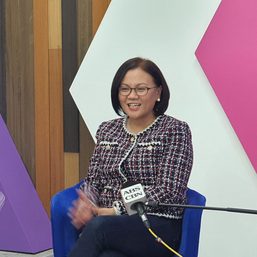
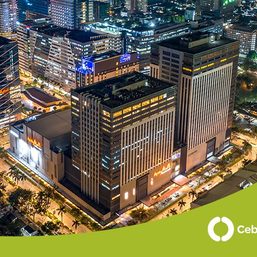
![[In This Economy] A counter-rejoinder in the economic charter change debate](https://www.rappler.com/tachyon/2024/04/TL-counter-rejoinder-apr-20-2024.jpg?resize=257%2C257&crop=267px%2C0px%2C720px%2C720px)
![[In This Economy] Here’s a new paper by UP economists on economic charter change](https://www.rappler.com/tachyon/2024/04/TL-foreign-direct-investments-apr-12-2024.jpg?resize=257%2C257&crop=299px%2C0px%2C720px%2C720px)
![[EDITORIAL] Kapag bumabagsak ang ratings, balikan ang basics](https://www.rappler.com/tachyon/2024/04/animated-bongbong-marcos-sara-duterte-popularity-numbers-2024-carousel.jpg?resize=257%2C257&crop_strategy=attention)
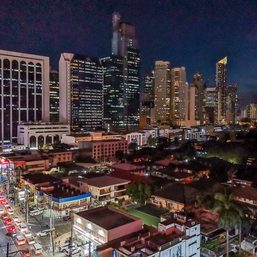
![[ANALYSIS] Promoting PPP via a sufficiently empowered media](https://www.rappler.com/tachyon/2024/04/PPP-and-media.jpg?resize=257%2C257&crop=365px%2C0px%2C720px%2C720px)



![[Only IN Hollywood] Spider-Man’s Pinoy bestie beats Fall Guy; Fil-Am voices Pixar film character](https://www.rappler.com/tachyon/2024/05/only-in-hollywood-may-8-2024.jpg?resize=257%2C257&crop=314px%2C0px%2C720px%2C720px)
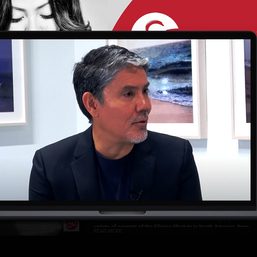
![[ANALYSIS] A Rube Goldberg cartoon of our inconvenient reality](https://www.rappler.com/tachyon/2024/05/tl-inconvenient-reality-05092024.jpg?resize=257%2C257&crop=280px%2C0px%2C720px%2C720px)
![[In This Economy] Economic charter change is very unpopular – it’s time lawmakers listened](https://www.rappler.com/tachyon/2024/04/in-this-economy-charterchange.jpg?resize=257%2C257&crop=292px%2C0px%2C720px%2C720px)
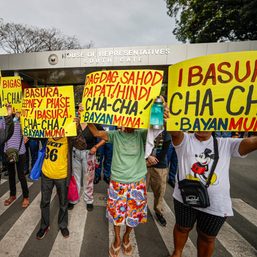
![[OPINION] The First Mode conundrum](https://www.rappler.com/tachyon/2024/03/tl-first-mode-conundrum-03232024.jpg?resize=257%2C257&crop=283px%2C0px%2C720px%2C720px)
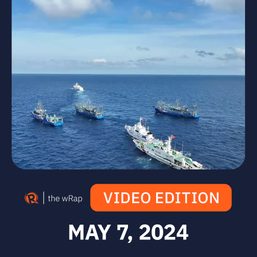


I strongly agree: “Only those in the government, both elected and appointed, can commit corruption, and only they stand to benefit from a banking system that enables them to keep the fruits of their dastardly acts away from the prying eyes of the public.” These corrupt officials are in cahoots with our bank owners and stockholders. This is because the latter group is the former’s campaign fund donors.